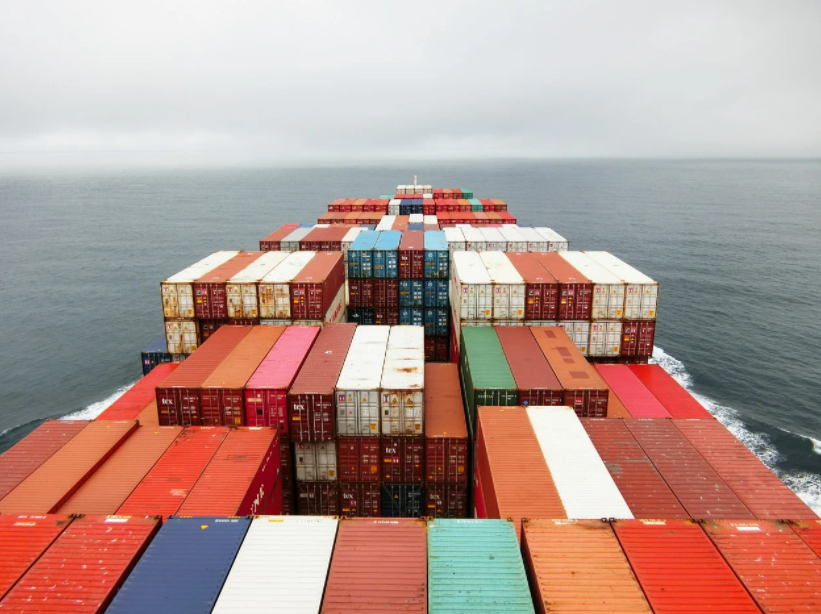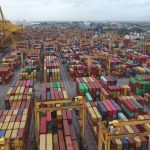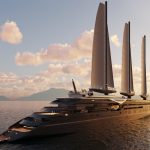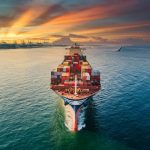Hanwha Ocean, one of South Korea’s leading shipbuilders, announced on Oct 10. that it has secured a contract to build six containerships for a European client. Valued at 1.6932 trillion won (approximately $1.24 billion), this deal represents 22% of the company’s 2022 revenue (7.4083 trillion won). This is Hanwha Ocean’s first containership order in two years and nine months, dispelling rumors that the company had exited this market. Shifts in the global industry have played a role in reviving demand.
Containerships, used to transport large volumes of containerized cargo, are less technically complex compared to other vessel types. Chinese shipyards, relative newcomers to the industry, have gained dominance by offering low-cost contracts and mass production capabilities. This year, Chinese shipbuilders are expected to account for around 80% of global containership orders, totaling about 3 million TEUs (1 TEU equals a 20-foot container). Meanwhile, South Korean shipbuilders have concentrated on high-value ships like LNG carriers, avoiding head-on competition with China in the containership sector.
However, with containership prices rising by 90% in the past four years and global shipping companies placing large orders, South Korean shipbuilders are being drawn back into the market. This year, the global containership market is expected to be valued at around 47 trillion won ($34.8 billion). Competition has reignited between South Korea, known for its eco-friendly dual-fueled engine technology, and China, which excels at mass-producing ultra-large containerships.
Chinese shipbuilders are also expanding their share in the eco-friendly vessel market. Recent reports indicate that South Korean shipyards were excluded from a 5 trillion won contract for 24 containerships with Hapag-Lloyd, the world’s fifth-largest shipping company. Instead, China’s Yangzijiang Shipbuilding and New Times Shipbuilding secured the deal. As the International Maritime Organization (IMO) tightens carbon emission regulations, the industry is transitioning from high-emission bunker C oil to dual-fueled engines powered by LNG and methanol. China’s ability to offer lower prices while meeting eco-friendly requirements has given it a competitive edge.
Chinese shipyards are making significant investments in response to the rising demand for eco-friendly ships. Yangzijiang Shipbuilding is investing 3 billion yuan (about 570 billion won) to build an eco-friendly shipyard in Jiangsu Province, set for completion in 2026. New Times Shipbuilding reportedly invests up to 5 billion yuan (approximately 940 billion won) in smart shipbuilding technology.
China is also advancing its containership technology, focusing on vessels larger than 24,000 TEUs, the largest currently in operation. In September, a research institute under China State Shipbuilding Corporation (CSSC) received Approval In Principle (AiP) for a 27,500-TEU LNG dual-fueled containership. Additionally, Chinese ports are being upgraded to accommodate ships as large as 32,000 TEUs, further strengthening China’s position in the global market.
While South Korean shipbuilders remain focused on high-value vessels like LNG carriers, they are also exploring opportunities in the growing containership market. Shipping companies, flush with cash from recent profitable years, are rushing to place orders in preparation for future lower shipping rates. In July, HD Hyundai Heavy Industries (HD HHI) secured a contract for 12 LNG dual-fuel containerships worth about 3.7 trillion won ($2.7 billion), reportedly at a higher price than their Chinese competitors.
Industry experts believe dual-fueled engine technology will be key in future competition for containership orders. Starting next year, China is expected to deliver 40 to 50 LNG dual-fueled containerships annually, despite its previous annual output peaking at just over 10 vessels. With the world’s first LNG and methanol dual-fueled engines, South Korean firms still hold a technological edge. Major shipbuilders like HD HHI and Hanwha Ocean will likely have priority access to these advanced engines, produced by HD HHI’s Engine and Machinery Division and Hanwha Engine. However, China’s efforts to secure global certification for ammonia dual-fuel engine technology, as outlined in its “Action Plan for Green Development in the Shipbuilding Industry (2024-2030),” pose a new challenge for South Korean shipbuilders.
Source: The Chosun Daily






